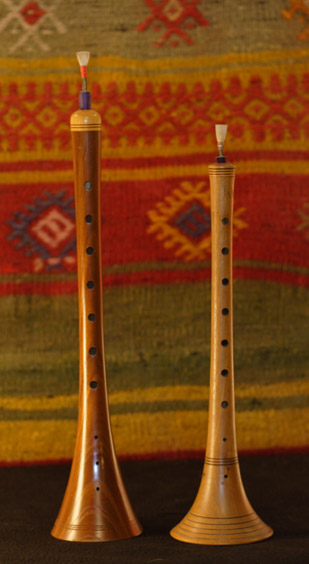قصر أولاد سلطان بتطاوين/Ksar Ouled Soltane
يعد قصر "أولاد سلطان" "تطاوين" في تونس أحد أهم قصور جنوب تونس ويقع بالقرب من مدينة تطاوين. ينقسم موقع "قصر أولاد سلطان " إلى مربعين محاطين بغرف مبنية على مستويات مختلفة. تعد القصور الأمازيغية في جنوب تونس من أهم الهياكل التاريخية في تونس. لقد تم بناؤه منذ أكثر من ألفي عام ويسمى "غسر" بالأمازيغية. تم بناؤه من قبل القبائل الأمازيغية ثم القبائل العربية. يزيد عدد القصور عن 150 قصرا ، وتمثل القصور مثالا حيا على التميز الأمازيغي في البناء والتحضر المبكر. لقد تم استخدام القطع المخصصة لتخزين المواد الغذائية مثل القمح والزيت والتين ، وكذلك الأسلحة ، على نطاق واسع في الحروب ، وخاصة ضد الرومان والبيزنطيين والعرب والفرنسيين. القصور هي أحد الرموز التي تقدم تونس هي شهود على قدرة أسلافهم والطريقة التي لم يستسلموا لظروف الطبيعة وجعلوا الصحراء القاحلة مكانا مليئا بالمباني العملاقة و تتميز بشكل متميز يجعلها رطبة وباردة قليلاً. الحجر والطين ، ثم يتم تنعيمه بالطين لإعطاء اللون المحيط للتمويه وهناك ثلاثة أنواع ، وهي قصر مدني وقصر جبلي وقصر عادي ومتوسط عدد الغرف في القصر بين 150 و 200. وفي القصر "أولاد سلطان" ، تم استخدام 440 غرفة. كانت الكاهنة متمركزة في جيشه. بقيت القصور عامل جذب سياحي في السياحة الثقافية. وكانت القصور الرئيسية هيبني بركة وقصر شنني وقصر دويرات وقصر غيلان وقصر غرماسة وقصر حدادة وقصر حلوف وقصر أولاد دباب وقصر أولاد سلطان وقصر زناتة والقصور السهلية وقصر أولاد عون وقصري بني مهيرة وقصر المرة وقصر العمارنة وقصر القاعة وهو أقدم قصر بالجهة وقصر الكراشوى وقصر الغرياني وقصر الهنشير وقصر الحاج حمد ، كل هذه القصور لا تزال رمزا للثراء الحضاري والحضاري لجنوب تونس كشهود تاريخيين للعمارة. حصون أقامها البربر هربًا من زحف بني هلال في منتصف القرن الحادي عشر. تم بناءها خصيصًا لتعمل كمستودعات ثم تحولت إلى رمز هوية للقبائل البدوية لأنها تتبع قطعان بحثًا عن مصادر الغذاء والماء ، وكذلك قصر "أولاد سلطان" الواقع في 20 كم من مدينة تطاوين. عمادة "أولاد سلطان" وتعتمد على نص نقش على الجبس ويمكن القول أن القصر تأسس عام 1066 هـ. ويحتل طولًا مستطيلًا من الشمال إلى الجنوب يبلغ 107 م وعرضًا شرقًا وغربًا يبلغ 59 مترًا وارتفاعه 7 أمتار. يتكون القصر من جزء قديم وجزء إضافي يحتوي على 272 قطعة وقصر سلطان. الغرف متداخلة أفقياً. القصر مستطيل الشكل على شكل قبة ، ويستخدم في الأنشطة الثقافية ، وخاصة المهرجانات الصيفية ، بما في ذلك مهرجان القصر.
-------------------------------------------------------------------------------------------------------------------------
Ksar Ouled Soltane "Tataouine" en Tunisie est l'un des palais les plus importants du sud de la Tunisie et est situé près de la ville de Tataouine. L'emplacement Ksar Ouled Soltane est divisé en deux places entourées de pièces construites à différents niveaux. Les palais amazighs du sud de la Tunisie font partie des structures historiques les plus importantes de la Tunisie. Il a été construit il y a plus de deux mille ans et s'appelle Gesrou en Amazigh. Il a été construit par les tribus amazighes puis les tribus arabiennes. Le nombre de palais est supérieur à 150 et les palais sont un exemple vivant de l’excellence des Amazighs en matière de construction et d’urbanisation précoce. Les pièces destinées à stocker des aliments tels que le blé, l'huile et les figues, ainsi que les armes, ont été beaucoup utilisées dans les guerres, en particulier contre les Romains, les Byzantins, les Arabes et les Français. Les palais sont l'un des symboles qui se présente la Tunisie sont témoins de la capacité de leurs ancêtres et de la manière dont ils ne se sont pas rendus aux conditions de la nature et ont fait du désert aride un lieu rempli de bâtiments gigantesques et caractérisé par une forme distincte qui les rend peu humides et froids. La pierre et la boue, puis lissées avec de l'argile pour donner la couleur environnante au camouflage Il existe trois types, à savoir un palais civil et un palais de montagne et un palais ordinaire et le nombre moyen de salles dans le palais est compris entre 150 et 200. Et dans Ksar Ouled Soltane, 440 salles ont été utilisées. La prêtresse était postée dans son armée Les palais sont restés une attraction touristique dans le tourisme culturel.Les principaux palais étaient les palais Bani Baraka, Shanani, Dwirat, Ghilan, Garmasa, Haddad, Awlad Dabbab, Al-Marra Le palais de la région, le palais de Karachoy, le palais de Gharyani, le palais de Hansheer et le palais de Hamad Hamad, tous ces palais sont toujours un symbole de la richesse culturelle et de civilisation du sud de la Tunisie comme témoins historiques de l’architecture Ces palais sont des forteresses érigées par les Berbères pour échapper à l’empiétement de Bani Hilal au milieu du XIe siècle. Elles ont été spécialement construites pour servir d’entrepôts puis transformées en symbole d’identité pour les tribus nomades alors qu’elles suivent les troupeaux à la recherche la nourriture et de sources d’eau, ainsi que Ksar Ouled Soltane situé à 20 kilomètres de la ville de Tataouine. Décanat "Ouled Sultan" et dépendant d'un texte graver sur le gypse On peut dire que le palais a été fondé en 1066 AH. Il occupe une longueur rectangulaire du nord au sud de 107 m et une largeur d’est en ouest de 59 m et une hauteur de 7 mètres. Le palais est constitué d’une partie ancienne et d’une partie ajoutée contient 272 pièces et un palais Sultan. Les pièces superposées horizontalement Le palais est rectangulaire et en forme de dôme, il est utilisé dans les activités culturelles, en particulier les festivals d’été, notamment le festival du palais.
_________________________________________________________________________________
Ksar Ouled Soltane "Tataouine" in Tunisia is one of the most important palaces of southern Tunisia and is located near the city of Tataouine. The location Ksar Ouled Soltane is divided into two places surrounded by rooms built on different levels. The Amazigh palaces of southern Tunisia are among the most important historical structures of Tunisia. It was built more than two thousand years ago and is called Gesrou in Amazigh. It was built by the Amazigh tribes then the Arabian tribes. The number of palaces is over 150 and palaces are a living example of Amazigh excellence in construction and early urbanization. Pieces intended to store food such as wheat, oil and figs, as well as weapons, have been widely used in wars, particularly against the Romans, Byzantines, Arabs and French. The palaces are one of the symbols that presents Tunisia are witnesses to the ability of their ancestors and the way they did not surrender to the conditions of nature and have made the arid desert a place filled with gigantic buildings and characterized by a distinct shape that makes them slightly damp and cold. Stone and mud, then smoothed with clay to give the surrounding color to camouflage There are three types, namely a civilian palace and a mountain palace and an ordinary palace and the average number of rooms in the palace is included between 150 and 200. And in Ksar Ouled Soltane, 440 rooms were used. The priestess was stationed in his army The palaces remained a tourist attraction in cultural tourism.The main palaces were the Bani Baraka, Shanani, Dwirat, Ghilan, Garmasa, Haddad, Awlad Dabbab, Al-Marra palaces of the region, Karachoy Palace, Gharyani Palace, Hansheer Palace and Hamad Hamad Palace, all these palaces are still a symbol of the cultural richness and civilization of southern Tunisia as historical witnesses of architecture. fortresses erected by the Berbers to escape the encroachment of Bani Hilal in the middle of the eleventh century. They were specially built to serve as warehouses and then transformed into an identity symbol for nomadic tribes as they follow herds in search of food and water sources, as well as Ksar Ouled Soltane located 20 kilometers from the city of Tataouine. Deanship "Ouled Sultan" and dependent on a text engrave on the gypsum It can be said that the palace was founded in 1066 AH. It occupies a rectangular length from north to south of 107 m and an east-west width of 59 m and a height of 7 meters. The palace consists of an old part and an added part contains 272 pieces and a Sultan palace. The rooms are superimposed horizontally The palace is rectangular and dome-shaped, it is used in cultural activities, especially summer festivals, including the palace festival.












